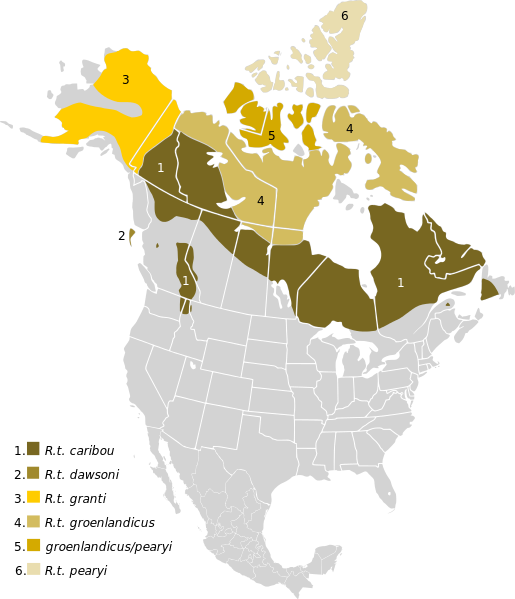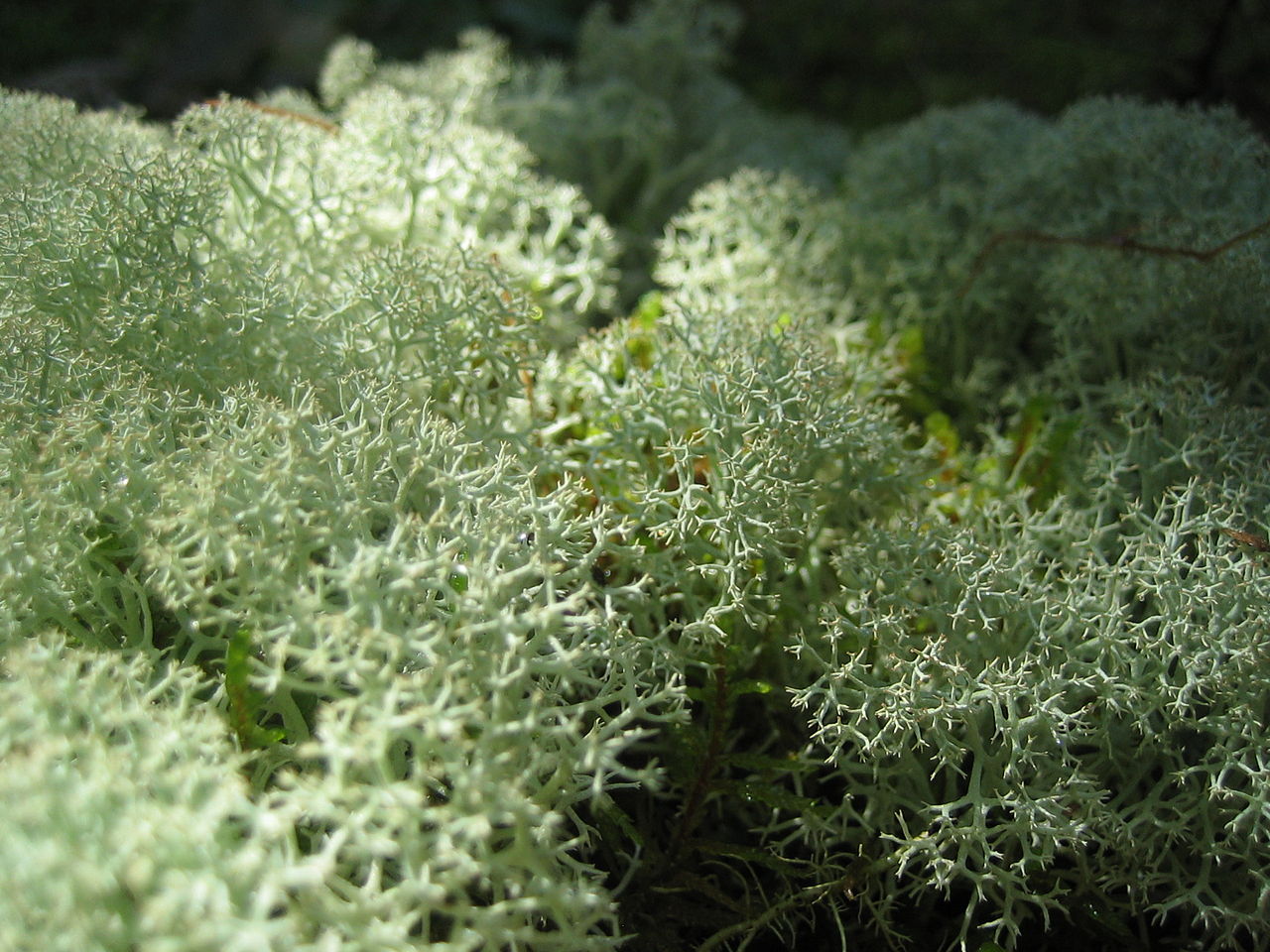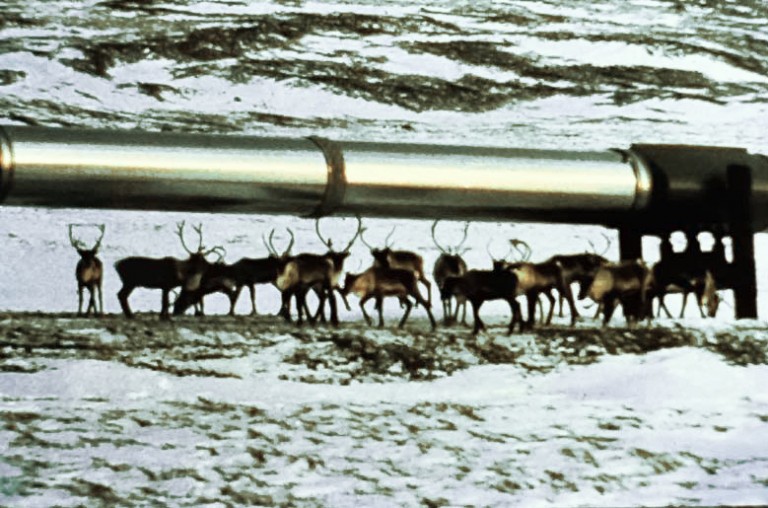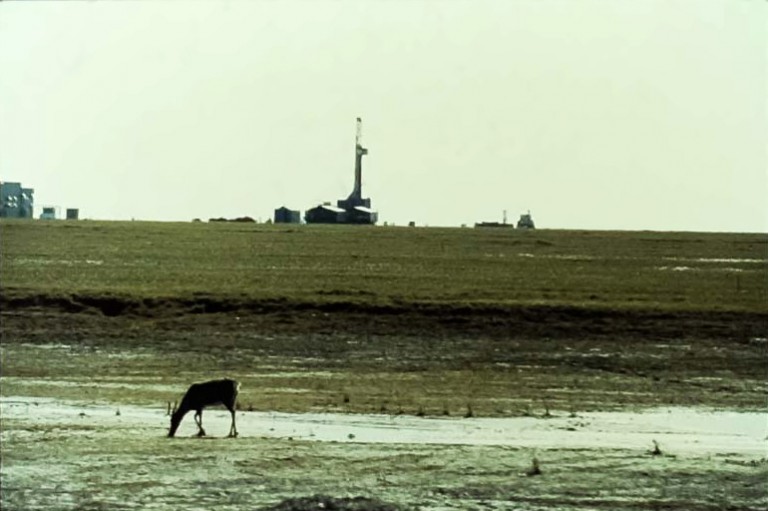3.2 Caribous Ecosystems
In this section, we will learn about the ecological relationships among caribou and different elements of their habitat. This relationship is dynamic, complex, and variable across different regions. How do changes to habitat impact caribou? And what are some of the main threats to caribou habitat in the Canadian North?
Caribou are particularly sensitive to changes in their habitat. For example, among northern tundra herds (like the Porcupine Caribou), a warmer-than-usual summer would likely result in an increase in insects numbers and heightened insect predation. Caribou would expend more energy trying to escape insect predation and cows might prematurely move away from the calving grounds to find areas with less insects. Possible results being a decrease in pregnancy rates and a negative impact on the body condition of individual caribou. Thus, variability in seasonal weather patterns has the potential to impact caribou at the individual and herd level. This is just one example of how a changing habitat can impact caribou. In the remainder of this section, we will think about this ecological relationship in more depth while also considering how human activity can impact caribou habitat.
Caribou Distribution and Feeding Patterns in Arctic Tundra and Sub-Arctic Woodland Habitats
Caribou and reindeer inhabit woodland and tundra ecosystems throughout the circumpolar north. This map gives a general impression of the taxonomic distribution of caribou in North America, including Rangifer tarandus dawsoni — a rare subspecies formerly inhabiting Haida Gwaii. Rangifer tarandus dawsoni went extinct in the early 20th century.

To get an idea of the woodland caribou’s changing habitat, watch the following video:
Caribou feeding habits and patterns are subject to seasonal variety. During the summer, caribou tend to feed on on green deciduous shrubs. However, after the leaves have fallen off the shrubs, and the landscape is blanketed in snow and ice, caribou depend to a large extent on lichens. Caribou have to dig through snow and ice to get food. The following video demonstrates how caribou forage for lichen (their main winter food source) during the winter months.
Caribou moss, or Cladonia rangiferina, is a cold-hardy fungi (it is not actually a moss) that grows throughout northern tundra and boreal woodland ecosystems. However, the lichens that caribou depend upon during the winter months grow slowly and are susceptible to fire. Also, heavy snow and ice formation can prevent caribou from digging down to the lichens. Thus, climate-related changes to weather patterns could have a major impact on the availability of the main winter food source for caribou.

Climate Change
Will a warming climate have a detrimental effect on caribou populations? This section considers the potential threats to caribou posed by a warming global climate.
Caribou biologists Ann Gunn and Don Russell have spent many years studying caribou and their habitat and assessing the threat of climate change. In a paper (co-authored with J. Eamer), Gunn and Russell consider a number of climate-related scenarios and outline their potential impact on caribou herds. Study the chart on page 25.
A. Read the article “Global Declines of Caribou and Reindeer,” by Liv Solveig Vors and answer the following questions.
Citation: Liv Solveig Vors, “Global Declines of Caribou and Reindeer,” Global Change Biology 15, 11 (2009): 2626-2633.
- How do the authors differentiate the current period of warming and its impact on caribou and reindeer from previous fluctuations in global climate?
- According to the authors, a warming climate will cause specific changes to plant and insect phenology. What are these changes and how will they impact caribou?
- Describe the relationship among climate change, extreme weather events, and caribou population dynamics.
B. Watch the video “Global Warming and Climate Change in Alaska” (National Geographic), and answer the following questions:
- Scientists and Indigenous Elders believe global warming could change arctic ecosystems. List and describe three ways in which climate change could potentially impact the Porcupine Caribou Herd.
- Why are caribou often found on hills and high ridges during the warmer months?
- According to Darius Elias, how have changing weather patterns impacted caribou?
Resource Exploration and Industrial Development Projects
Increasingly, human activity is impacting caribou habitat throughout the Canadian North. The industrial activity associated with mineral and oil and gas exploration is a significant cause of habitat loss. For the Beverly Herd, uranium mining in northern Saskatchewan poses a considerable threat to caribou habitat. In the western Arctic, increases in oil and gas exploration could mean significant habitat loss for herds such as the Porcupine Caribou Herd (Gunn, Russell, and Eamer, 16-17). This is a cause for concern for those communities that depend on the caribou and managers who are responsible for caribou conservation.

The Beverly and Qamanirjuaq Caribou Management Board and the Porcupine Caribou Management Board have both indicated that mineral exploration and development are major threats to caribou habitat. Look at the websites for these two co-management boards and consider how each describes the impact that industrial development will have on caribou habitat and caribou herds.
arctic-caribou.com/the-herds/challenges-and-threats/
http://www.pcmb.ca/habitat
If you are interested to learn more about the way in which caribou habitat conservation intersects with oil and gas interests (in Alberta), you can watch The Billion Dollar Caribou, produced by CBC’s The Nature of Things.

References Cited
Gunn, A., Russell, D. and Eamer, J. 2011. Northern caribou population trends in Canada. Canadian Biodiversity: Ecosystem Status and Trends 2010, Technical Thematic Report No. 10. Canadian Councils of Resource Ministers. Ottawa, ON.